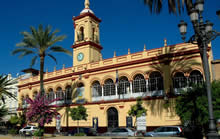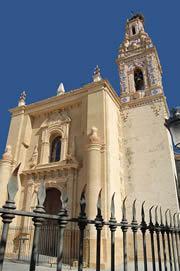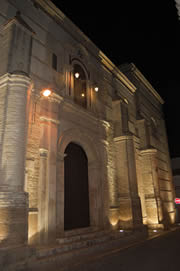-
 We hear the name of “Osuna Golf” again — 22 Feb 2013
We hear the name of “Osuna Golf” again — 22 Feb 2013El Pespunte: "The PGOU can be checked on Internet and it will be opened to inhabitants of Osuna suggestions" Read more
-
 Public information in August — 2 Aug 2013
Public information in August — 2 Aug 2013Public information in August BOJA nº148 of 30/ 07/13 Read more

OFFICE HEADQUARTER
C/ ALFONSO XII, 51
41640 (OSUNA)
SEVILLE
TEL - (+34) 954 81 14 86
info@osunagolf.es
Loading
Arahal
 Ar-rahal is an Arab term that refers to the place of the paths where you rest. In the eastern part of Spain it was also used as a term for agriculture labour.
Ar-rahal is an Arab term that refers to the place of the paths where you rest. In the eastern part of Spain it was also used as a term for agriculture labour.
But in Andalusia and Extremadura it means the place (‘la majada’ or ‘el hato’) where farmers kept their cattle.
 The name was documented for the first time referring to the area that Sancho IV donated to Alcanra’s order, as a part of the territory of Morón, in 1285. The name of ‘El Arrahal’ was documented as a toponym in 1342, a century after the Castile conquered the area, and the term was well understood by the citizens of the region. It is hard to say if Arahal was still a place where farmers kept gathering their cattle or if it was inhabited by numerous citizens with different occupations.
The name was documented for the first time referring to the area that Sancho IV donated to Alcanra’s order, as a part of the territory of Morón, in 1285. The name of ‘El Arrahal’ was documented as a toponym in 1342, a century after the Castile conquered the area, and the term was well understood by the citizens of the region. It is hard to say if Arahal was still a place where farmers kept gathering their cattle or if it was inhabited by numerous citizens with different occupations.
The investigation of its name origin makes us believe that the population of Arahal was something spontaneous during the 14th century, but not being able to precise the rhythm it was done with. As it was in the municipal area of Morón, the first settlers of the 14th century took advantage out of its boundaries and near location to paths and safer grazing land.
 Since the beginning of the 15th century, the chapter minutes of Moron give evidence that El Arrahal was a well-populated place, being able to get important dues out of Morón´s council, before segregating in 1554.
Since the beginning of the 15th century, the chapter minutes of Moron give evidence that El Arrahal was a well-populated place, being able to get important dues out of Morón´s council, before segregating in 1554.
During turdetanian times, there was a site on the western part of the current location of Arahal called Basilippo, documented in roman routes and several inscriptions nearby. The principle remains is an important memorial monument known as Torre del Cincho.
 Madoz, in his geographic-statistic-history dictionary of Spain and his possessions in Ultramar(1850), analyzed the population of El Arahal revealing that it had 1.103 houses distributed in 45 streets and two squares.
Madoz, in his geographic-statistic-history dictionary of Spain and his possessions in Ultramar(1850), analyzed the population of El Arahal revealing that it had 1.103 houses distributed in 45 streets and two squares.
Up until 1981, the registered toponym El Arahal gave way to its official name as Araharl.